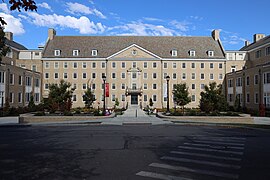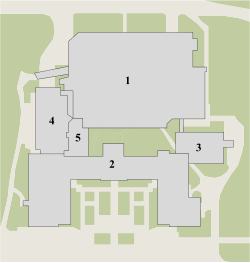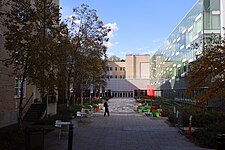
Home economics, also called domestic science or family and consumer sciences, is a subject concerning human development, personal and family finances, consumer issues, housing and interior design, nutrition and food preparation, as well as textiles and apparel. Much less common today, it was, and is, most commonly taught in secondary school or high school.
In the United States, a statutory college or contract college is a higher education college or school that is a component of an independent, private university that has been designated by the state legislature to receive significant, ongoing public funding from that respective state. The statutory college is operated by the university with state funding used to serve specific educational needs of the state.
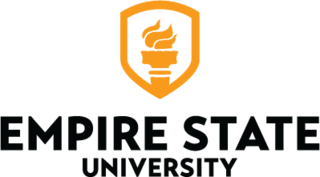
Empire State University is a public university headquartered in Saratoga Springs, New York. It is part of the State University of New York (SUNY) system. Empire State University is a multi-site institution offering associate, bachelor's, master's, doctoral degrees, and distance degrees worldwide through the Center for Distance Learning. The university has approximately 12,000 undergraduate students and has an acceptance rate of 51%. The university is accredited by the Middle States Commission on Higher Education.

The New York State College of Agriculture and Life Sciences at Cornell University is one of Cornell University's four statutory colleges, and is the only College of Agriculture and Life Sciences in the Ivy League. With enrollment of approximately 3,100 undergraduate and 1,000 graduate students, CALS is Cornell's second-largest undergraduate college and the third-largest college of its kind in the United States.
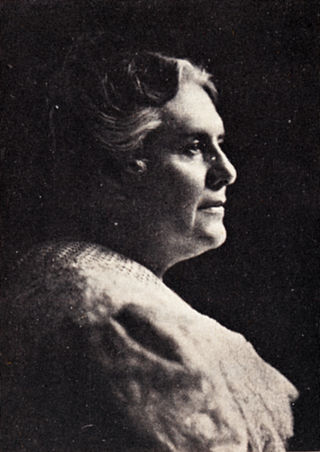
Anna Botsford Comstock was an acclaimed author, illustrator, and educator of natural studies. The first female professor at Cornell University, her over 900-page work, The Handbook of Nature Study (1911), is now in its 24th edition. Comstock was an American artist and wood engraver known for illustrating entomological text books with her husband, John Henry Comstock including their first joint effort, The Manual for the Study of Insects (1885). Comstock worked with Liberty Hyde Bailey, John Walton Spencer, Alice McCloskey, Julia Rogers, and Ada Georgia as part of the department of Nature Study at Cornell University. Together they wrote nature study curricula to develop a curiosity for, and education about, the surrounding natural world. Comstock also was a proponent for conservationism by instilling a love and appreciation of the natural world around us.
Urie Bronfenbrenner was a Russian-born American psychologist best known for using a contextual framework to better understand human development. This framework, broadly referred to as 'ecological systems theory', was formalized in an article published in American Psychologist, articulated in a series of propositions and hypotheses in his most cited book, The Ecology of Human Development and further developed in The Bioecological Model of Human Development and later writings. He argued that natural experiments and applied developmental interventions provide valuable scientific opportunities. These beliefs were exemplified in his involvement in developing the US Head Start program in 1965. Bronfenbrenner's writings about the limitations of understanding child development solely from experimental laboratory research and the potential for using contextual variability to provide insight into developmental processes was important in changing the focus of developmental psychology.

The history of Cornell University begins when its two founders, Andrew Dickson White of Syracuse and Ezra Cornell of Ithaca, met in the New York State Senate in January 1864. Together, they established Cornell University in Ithaca, New York, in 1865. The university was initially funded by Ezra Cornell's $400,000 endowment and by New York's 989,920-acre (4,006.1 km2) allotment of the Morrill Land Grant Act of 1862

Flemmie Pansy Kittrell was the first African-American woman to earn a Ph.D. in nutrition. Her research focused on such topics as the levels of protein requirements in adults, the proper feeding of black infants, and the importance of preschool enrichment experiences for children.
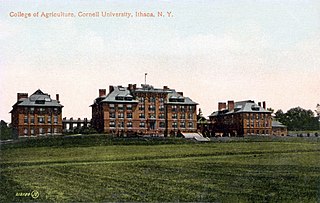
Roberts Hall was the first building of the New York State College of Agriculture at Cornell University, built 1905–1906, and demolished July 1990. A second building of that name was built in 1990.
The New York State College of Forestry, the first professional school of forestry in North America, opened its doors at Cornell University, in Ithaca, New York, in the autumn of 1898., It was advocated for by Governor Frank S. Black, but after just a few years of operation, it was defunded in 1903, by Governor Benjamin B. Odell in response to public outcry over the College's controversial forestry practices in the Adirondacks.

Central Campus is the primary academic and administrative section of Cornell University's Ithaca, New York campus. It is bounded by Libe Slope on the west, Fall Creek on the north, and Cascadilla Creek on the South.
The year 2011 in architecture involved some significant architectural events and new buildings.
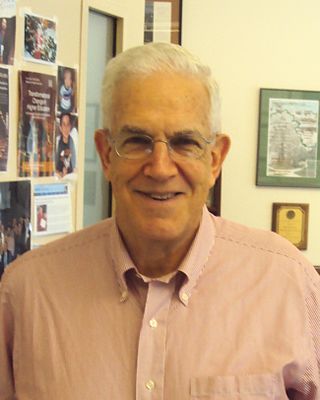
Ronald Gordon Ehrenberg is an American economist. He has primarily worked in the field of labor economics including the economics of higher education. Currently, he is Irving M. Ives Professor of Industrial and Labor Relations and Economics at Cornell University. He is also the founder-director of the Cornell Higher Education Research Institute (CHERI).

Martha Van Rensselaer was a founding co-director of the College of Home Economics, which led to the establishment of the New York State College of Human Ecology in Ithaca, New York. Van Rensselaer served as an educator and proponent of the application of knowledge to improved quality of life in the home. She called the field of study “domestic science” and focused on key aspects of homemaking.

Flora Rose was an American scientist, nutritionist, and co-director of what would become New York State College of Human Ecology. Rose, along with Martha Van Rensselaer, was named the first full-time female professor at Cornell University.
Catherine J. Personius was an American food scientist who had a significant influence on food and nutrition research at Cornell University and herself studied the chemical properties of food products in order to understand their nutritional value. She was the first woman to serve as the coordinator of research and assistant director of the Experiment Station at Cornell.

Alice Blinn was an American educator, home efficiency expert, and magazine editor. Born in Candor, New York, she attended the New York State normal school and became a teacher. After teaching briefly, in 1913, she entered Cornell University and earned a degree in Domestic Science. While in school, she founded and managed the Cornell Women's Review. After graduation in 1917, she became a food conservation demonstrator for the New York Extension Service and then returned after a year to teach and manage the publications office for the Extension Service at Cornell.
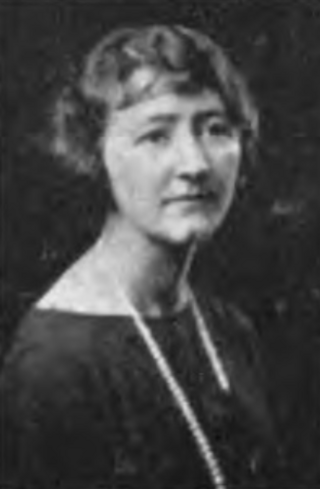
Beulah Blackmore was an American home economist on the faculty of Cornell University from 1915 to 1951, and head of the New York State College of Human Ecology at Cornell University's Textiles and Clothing department from 1925 to 1951.
